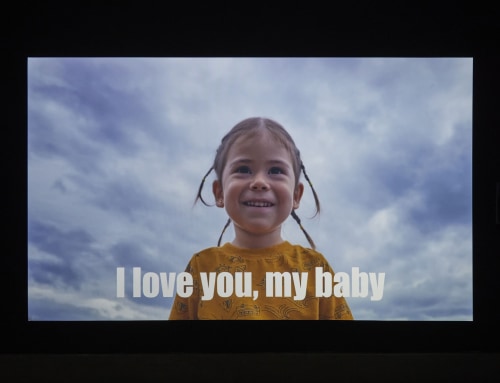
Artforum Reviews
Artforum September Issue
August 24, 2023
LIVERPOOL BIENNIAL 2023
Nicholas Galanin's brief video, K'idein ye jeené, 2021, focuses on the artist's child while an offscreen voice recites the words of the work's title, which translates to "You're doing such a good job" in Lingít, a language indigenous to North America's Pacific Northwest. It's the first work that you encounter at Bluecoat, one of eight venues of this summer's twelfth edition of the Liverpool Biennial, and one that crystallizes many of the themes of South Africa-based artist and curator Khanyisile Mbongwa's capacious and disarmingly gentle exhibition. Titled "uMoya: The Sacred Return of Lost Things," the biennial foregrounds structures. (especially linguistic) that support transgenerational bonds and prioritizes active processes of producing joy and resistance within conditions of historical subjugation.
Liverpool was, for a time, the British Empire's second city, its port lands central in the transatlantic slave trade. Several works-Ranti Bam's "Ifa," 2021-23, a series of sculptures in the church gardens where the city's first recorded Black resident is buried; Torkwase Dyson's Liquid A Place, 2021, a sequence of immense curved edifices that occupy the entire lower gallery of Tate Liverpool mine a uniquely located pathos from this history. Yet for a show rich in installations that address, directly or implicitly, the ways in which legacies of imperial plunder manifest in the city's present-tense psychological and geographical landscapes, its tenor is rarely oppressively grim. Metaphors of wind ("«Moya" is an isiZulu word for "spirit, breath, air, climate and wind") invite associations between works that recast violence, trauma, and grief not as inevitabilities, but as conditions that might engender new knowledge and new vocabularies.
For the first time, Liverpool's turbo-gentrifying north serves as the biennial's base, with the Tobacco Warehouse the gigantic epicenter of its bustling docklands-proving a particularly fertile setting for Albert Ibokwe Khoza's The Black Circus of the Republic of Bantu, 2022, a live work restaged as an installation, encompassing a number of videos and two candlelit shrines, cobbled together from bones, plastic waste, flowers, and supermarket soft drinks. Khoza here interrogates the kinds of self-exoticization demanded of artists from sub-Saharan Africa in «international" contexts, while nodding to the biennial model's complicity in these patterns of extraction, gentrification, and fetishization of the other. The work's privileged space within the exhibition--and its productively discomfiting and energizing impact--is an indicator that this biennial has commitments in mind beyond lofty rhetoric.